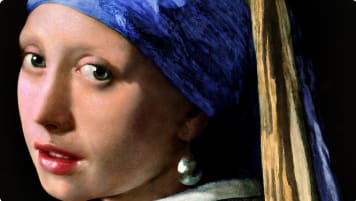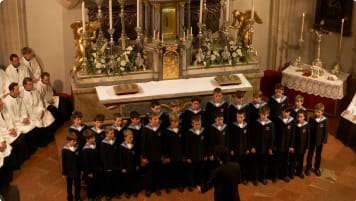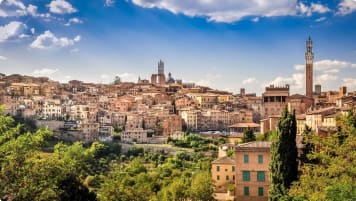Urbino and the Montefeltro
This article (blog)is part of a series on five influential Italian Renaissance families that shaped Italy, especially during the fifteenth and sixteenth centuries. It is based on both our Italian Renaissance Summer School course, and…
28 Feb 18 · 5 mins read
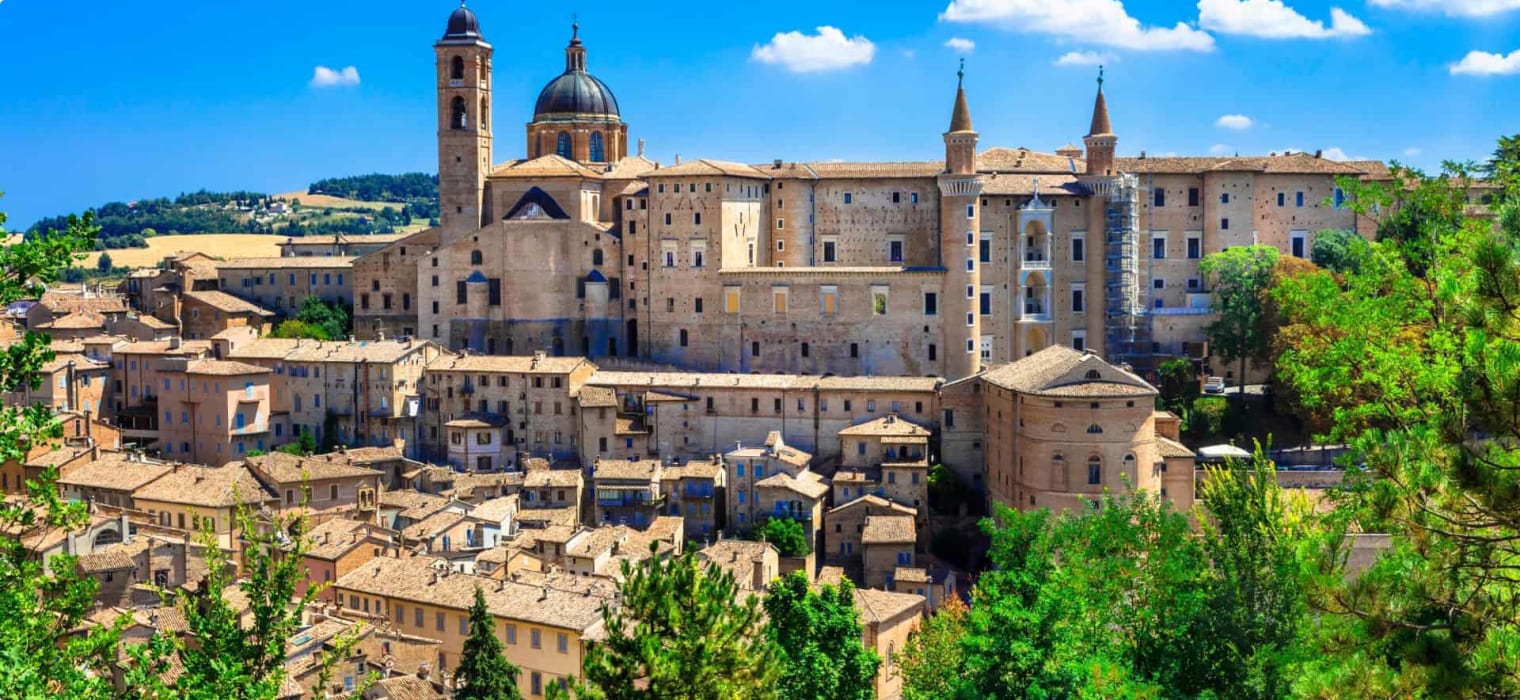
This article (blog)is part of a series on five influential Italian Renaissance families that shaped Italy, especially during the fifteenth and sixteenth centuries. It is based on both our Italian Renaissance Summer School course, and our Small Group Tour of Italy, structured around the story of these five families.
Urbino and The Montefeltro Family
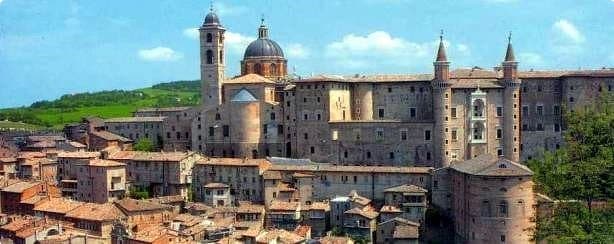
Urbino, while much smaller and less significant than Florence, never-the-less became an important centre of art and learning. During his lifetime Federico da Montefeltro’s patronage of the arts contributed enormously to Urbino’s status as an ideal Renaissance town. Many of the city’s old buildings still stand today. Today, The university of Urbino, founded in 1506, still operates. Because Urbino is relatively small, with a population of around 14,000, the university and its students strongly influence its atmosphere and culture.
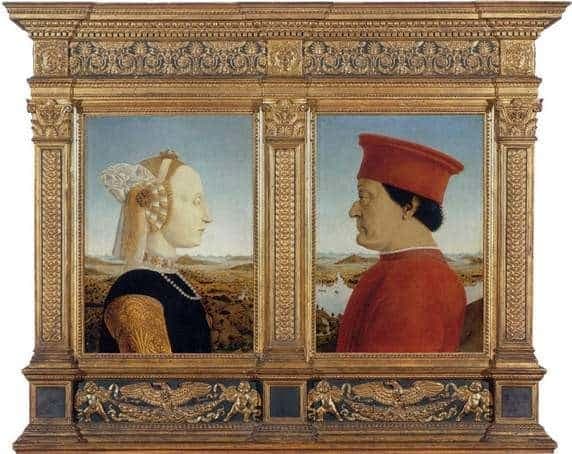
Federico and his second wife, Battista Sforza
Federico da Montefeltro was first of all a mercenary soldier, the most successful condottieri of his age.
He was born as the illegitimate son of Guidantonio da Montefeltro, lord of Urbino, but two years later was made legitimate by Pope Martin V. He was only sixteen when he began his career as a condotierri, and he made his name at the 1441 conquest of the castle of St. Leo.
In 1444, Federico’s half-brother Oddantonio da Montefeltro, was assassinated. While there has of course been speculation that this was the work of Federico, there is no evidence to back this up. However, this did result in his ascension to the role of Duke of Urbino.
Having succeeded his unpopular half-brother, Oddantonio, he set about transforming Urbino into one of the most brilliant cultural centres in Northern Italy. He earnt vast amounts of money in the service of the papacy and other city states such as Milan and Florence. His income between 1451 and his death in 1482 has been estimated at over a million and a half ducats. Most of this money he spent on beautifying his city.
As a boy Montefeltro spent two years as a hostage in Mantua where he attended the famous humanist school of Vittorino da Feltre with the Gonzago children. Here he was well grounded in humanist principles and learnt Latin, music, astronomy, mathematics and geometry. Vittorino also instilled in him the virtues of self-discipline and restraint
The palace in Urbino is the greatest of the many beautiful palaces Federico had built throughout his territory.
Federico’s Palace
The palace was built into a hillside but still opened onto the city’s main square. The architects Luciano Laurana and Francesco di Giorgio contributed a central façade with graceful towers framing a three storey loggia. Federico’s palace is a symbol of his peacetime ambitions. The palace began life as an extension of a modest family home which was remodelled and extended to provide a focus for the life and ceremony of the court. It represents Federico’s success as a military leader, he did not need to live in a military fortress, and he built his palace for pleasure and comfort.
The unusually large windows allowed light to flood the rooms bringing out the warmth and colour of the marquetry and the brilliance of the gilded ceilings. There were also practical innovations such as the smokeless fireplaces designed by Francesco di Giorgio. Federico seems to have been drawn to artists who could combine beauty and practicality.
Today, known as the Ducal Palace, the magnificent building is listed as a UNESCO World Heritage site, and is popular among tourists. It functions as a gallery with around 80 rooms of paintings, frescoes, sculpture, furniture, tapestry, drawings and engravings. All works on display were created between the fourteenth and seventeenth centuries. It has served this purpose since 1912.
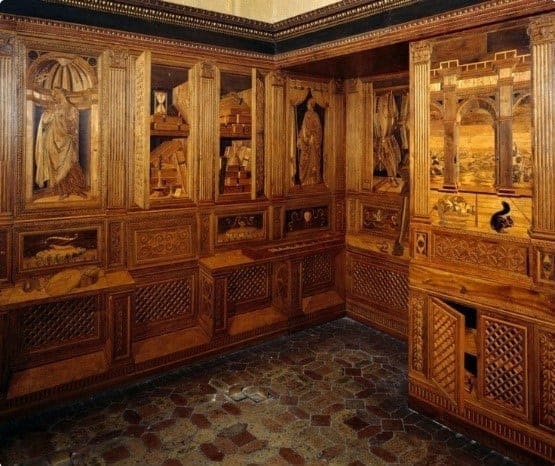
Federico’s studiolo in the palace at Urbino includes exceptional decorations.
Because Federico was the illegitimate son of Guidantonio di Montefeltro, he only succeeded to his father’s estate after the murder of his debauched and universally detested brother. There is no evidence to support rumours that he was involved in his brother’s murder.
At this point the city was in debt and Federico was surrounded by enemies. Some of them within his own city. He formed an alliance with Francesco Sforza and set about restoring the family fortunes through stable government and hiring himself out as a soldier of fortune.
While his own palace lacked fortifications he hired a defence expert to design and build a network of forts throughout the territory, spending some 200,000 ducats in the process. His won back the loyalty of his own subjects through low taxation, the building of ecclesiastical foundations and a display of ‘magnificence’.
In 1464 Pope Pius II granted Federico the right to pass on the rule of Urbino to a legitimate heir. Finally his second wife, Battista Sforza, presented him with a son in 1472. Sadly, although she was only 25, she never recovered after giving birth and died soon after. It was said that the two were soulmates, and that the Duke was totally devastated. She is remembered from the double sided portrait with her husband (in the Uffizi Gallery) by Piero Della Francesca.
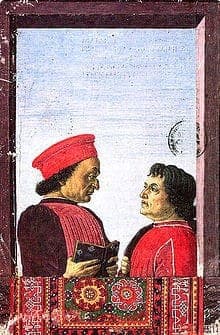
Federico with humanist writer Cristoforo Landino
Federico was always painted from side on as an early jousting accident had taken out one eye and caused him to hack off part of his nose, permanently disfiguring him! In order to minimise how much this injury would limit his ability in battle, Federico, had the bridge of his nose removed in order to improve his field of vision. As well as improving his prospects on the battlefield, he also wanted to avoid assassination attempts.
This is certainly the work of a paranoid man. In fact, it is said that Federico was one of the figures who inspired Niccolo Machiavelli in his writing of The Prince.
Guidobaldo
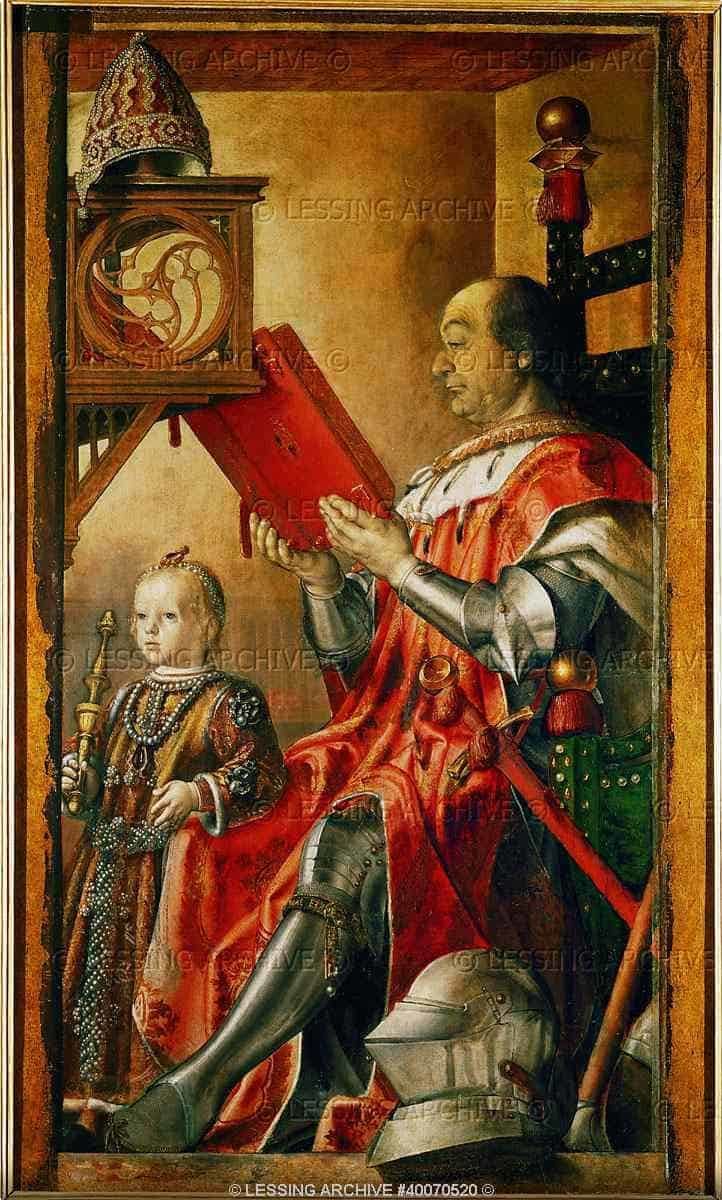
Federico and his young son, Guidobaldo.
Federico’s son, Guidobaldo, continued in his father’s footsteps, leading armies against France and serving as a captain-general for the Papacy despite the fact that he had a weak constitution and suffered from debilitating gout. Under Guidobaldo’s rule and that of his wife, Elisabetta Gonzago, from Mantua, Urbino continued to excel as a centre of cultural refinement.
Castiglione’s Book of the Courtier, a portrait of the court of Urbino was written between 1508 and 1518. The book is cast in the form of a series of dialogues between courtiers, presided over by the Duchess Elisabetta after her ailing husband had retired for the evening.
(We continue to see the links between our five Italian cities through marriages such as Federico’s with Battista Sforza and Guidobaldo’s with Elisabetta Gonzago as well as through the military alliances that they constantly made and broke off.)
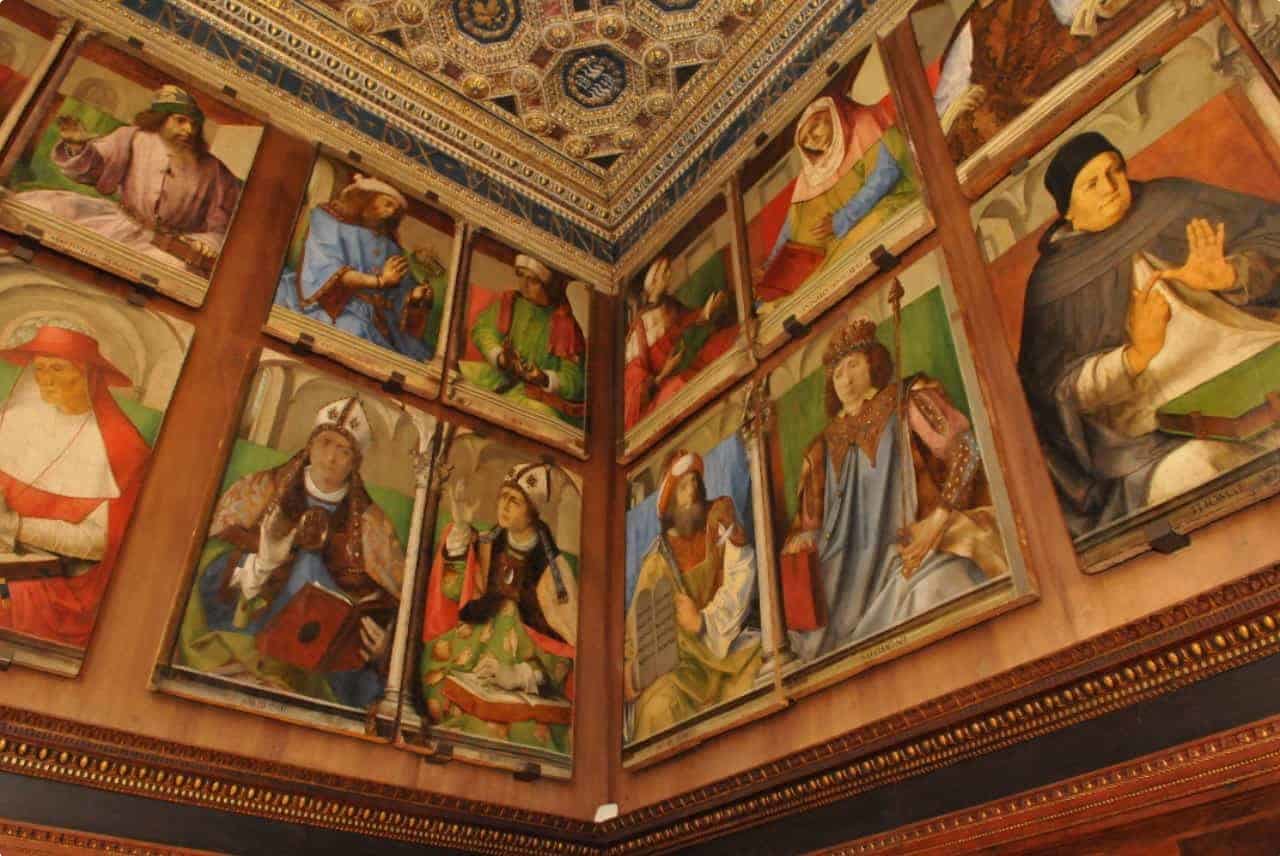
Another example of the decoration within Federico’s studiolo
The library Federico amassed was one of the most impressive in all of fifteenth-century Italy, perhaps the most impressive outside The Vatican. His household staff included four teachers of grammar, logic, and philosophy; five people whose task it was to read aloud during meals; and four manuscript transcribers who worked in the palace library. The marquis built two studies (or studioli) where he could enjoy humanist pursuits, one in the palace at Urbino, the other in the nearby town of Gubbio. Rather than have himself portrayed in a grand equestrian monument like other condottieri, Federico was depicted as both a man of action and a man of letters.
Art in the Renaissance
If you’re curious to go deeper into the relationship between art and the renaissance families, this video from New York‘s Metropolitan Museum of Art is well worth your time. It even includes analysis of some of the pictures shown above!
Articles about Italy published by Odyssey Traveller
- Italian Renaissance Families: Ferrara and the Este
- Italian Renaissance Families: Mantua and the Gonzaga
- The Roman Empire
- Who were the Roman Emperors
- Questions About Italy
- Trip Advice for Travellers going to Italy
- 10 Great Books to Read Before You Visit Italy
- as well as more articles on Italy here
External articles to assist you on your visit to Italy
Related Tours
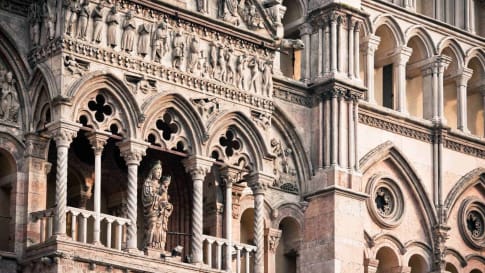
days
JanItalian Renaissance | Summer School course
Visiting Tasmania
This Summer school course looks at the influence and contribution five key families in shaping today's Italy. In the 15th and 16th centuries the principalities that became Italy were alive with new ideas. The boundaries of art, architecture, music, science, politics, religion and literature were pushed. It was also riven by bitter rivalry and even open warfare between the numerous independent city states.
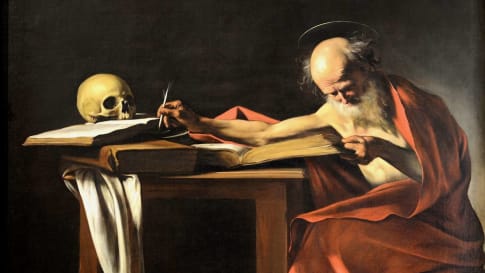
20 days
May, OctCaravaggio’s Journey | Small Group Tour in Italy
Visiting Italy, Malta
On this small group tour of Italy and Malta for mature and senior couples and solo travellers we trace the life of Caravaggio, exploring the artistic works he left behind and the tumultuous life he led. We follow him from his birthplace in Milan to Rome, Malta, Sicily and Naples. In each place he lived Caravaggio left behind a rich legacy of art for us to admire.
From A$15,125 AUD
View Tour
22 days
Mar, Sep, MayFlorence: Living in a Renaissance City
Visiting Italy
A small group tour with like minded people, couples or solo travellers, that is based in Florence. An authentic experience of living in this Renaissance city The daily itineraries draw on local guides to share their knowledge on this unique European tour. Trips to Vinci, Sienna and San Gimignano are included.
From A$14,375 AUD
View Tour
21 days
Apr, Aug, MayRenaissance Italy Tour: Story of Five Families
Visiting Italy
Explore Renaissance Italy on this small group tour though an examination of five significant city states. Florence, Urbino, Ferrara, Mantua and Milan were all dominated by families determined to increase the status of their city through art and architecture. Spend time coming to know the men and women who helped create the cities, as well as the magnificent legacy they left behind.
From A$14,295 AUD
View Tour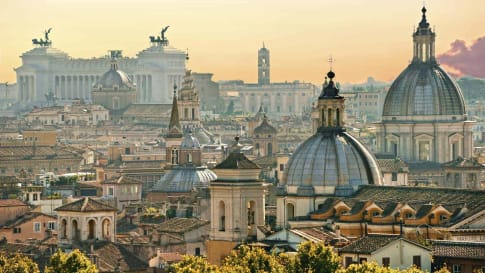
15 days
DecDiscover Rome | Cultural and History Small Group Tour for Seniors
Visiting Italy
Rome is arguably the most fascinating city in Italy, the capital city, once the centre of a vast, ancient empire and still today a cultural focus within Europe. Explore the city in-depth as part of a small group program spending 15 days exploring, just Rome and Roman History.
From A$9,235 AUD
View Tour